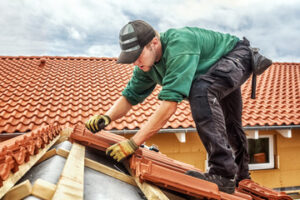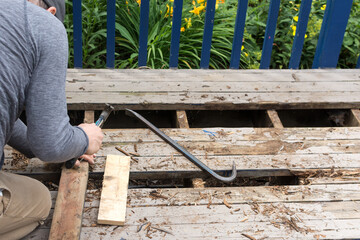Colorado Springs Roofing Contractor are construction professionals who specialize in the roofs of residential and commercial buildings. They can also offer other home improvement services, like siding and gutters.
Getting the best value for your money is important when shopping around for a roofing company. It’s often best to avoid choosing the lowest bidder, as that can lead to rushed and subpar work.
Roofing contractors help homeowners with the installation of a roof covering. They are able to assess the nature of each job and determine how much material is needed, what accessories may be necessary, and how long the work should take. They are also able to help shepherd the project through the required inspections and permitting processes. A contractor can help the homeowner understand and negotiate the various terms of a contract, including deposit requirements, payment schedules, and scope of work details.
A roofing contractor can install a variety of roof coverings, from asphalt shingles to metal roofing. They can also install gutters and downspouts and repair or replace siding on a home. They can also handle other exterior home improvements, such as window and door installations. They can perform this type of work themselves, or they may subcontract the work to other construction professionals.
Once the homeowner has selected a contractor and signed a contract, the roofing contractor will begin the installation process. They will remove existing shingles and then apply an underlayment, which is the base layer for the new roofing system. The underlayment is run along the edges of the roof, over the ice and water barrier and drip edge, and fastened with cap nails that are closer together at the edge of the roof and more spread out towards the middle.
The shingle layers are then installed, starting with the bottom row and working up to the ridge line. The shingles are then cut to size and placed on the underlayment, with each shingle being nailed into place with two nails in the top row and three nails in each of the other rows. Depending on the roof, the contractor will then install any necessary vents, flashing, drip edges, or other components. The shingle layers are then covered with a sealant to protect the underlayment and finish off the roof.
Repair
Re-roofing is the quickest and most affordable way to restore the appearance of an existing roof. It is also a more permanent solution than replacing the entire roof covering. However, re-roofing doesn’t provide as much protection from weather-related damage as a complete roof replacement.
Before you can make any repairs to your roof, you must first inspect it thoroughly. Get into your attic or crawl space and take a look around. Examine for damp stains, water leaking, and other signs of roof damage. If you spot any problems, don’t hesitate to contact a roofing contractor for professional advice and service. They are trained to inspect, repair, and maintain all types of roofs for residential and commercial properties. They use specialized tools to conduct detailed inspections and make necessary repairs.
Maintenance
A roofing contractor performs work to maintain the integrity of a roof covering. This includes the repair, replacement, and maintenance of materials such as asphalt, pitch, tar, felt fabric, glass fabric, or urethane foam to prevent water or its derivatives, compounds, or solids from penetrating protective structures or gaining access to material or space beyond such structures. Roofing contractors may also perform routine inspections of roofs to detect and address minor damage before it becomes more serious. They can also help shepherd construction projects through the permitting and inspection phases. They may even take on some managerial duties, such as hiring and managing other roofing contractors or subcontractors to perform certain aspects of the re-roofing job.
Roofing contractors can also assist in the installation of gutters and downspouts, as well as siding, windows, doors, and insulation.
Inspection
A roofing contractor installs products and repairs surfaces that seal, waterproof, and weatherproof structures to prevent water or other liquids, gases, or solids from penetrating the protection and gaining access to the material or space beyond. They may use asphaltum, pitch, tar, felt, glass fabric, urethane foam, or other roofing, waterproofing, and weatherproofing materials (and/or combinations of these).
A roof inspection is an examination of the condition of a home’s roof covering to identify mold, structural issues, wear from natural elements, or more. The roofing contractor will also examine the grading of the property to ensure that rainwater, snow, and floodwaters are directed away from the house or towards a drain.
In addition to looking at the roof, an inspector will look at the siding, windows, and doors to make sure they open and close as they should. They will also check the electrical, plumbing, and HVAC systems to make sure they are functioning properly. If you’re selling your home, it’s a good idea to have an inspection done before putting it on the market so you can address any issues found by the inspector.
A quality home inspector will take the time to look at every part of the property and explain their findings clearly. You can find a qualified home inspector by asking friends and neighbors for recommendations or doing an online search. It’s also a good idea to check an inspector’s references and credentials before hiring them. You can do this by contacting previous clients or the Better Business Bureau.



